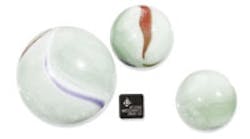Ready or not, there it came. The European Union's Restriction of Hazardous Substances Directive, that is. More commonly referred to as RoHS, the directive went into effect on July 1. It restricts the use of lead, mercury, cadmium and other materials in consumer electrical and electronic equipment.
The effective date didn't pass unnoticed. Press reports pointed out that a handful of high-tech manufacturers, including Apple and Palm, withdrew some of their products from the European market because of compliance issues. Overall, however, widespread or withheld accounts of non-compliance issues have not ensued.
That's not surprising. "The regulatory bodies in the EU are not geared up for a major enforcement initiative, from what we have been able to tell," says Jim Brown, vice president, global innovation and engineering research, for analyst firm Aberdeen Group. "I do expect that there will be some examples made through enforcement, and it will probably be a very unfortunate company that gets singled out."
Yet many manufacturers remain unprepared. An ongoing RoHS readiness survey recently conducted by Arena Solutions, a provider of product lifecycle management (PLM) solutions, indicates that nearly 60% of the respondents do not have a good understanding of the European directive or how to demonstrate compliance and due diligence. That confusion has been somewhat offset by manufacturers like Louisville, Colo.-based Kiosk Information Systems, which in August proclaimed its products RoHS-compliant.
Aberdeen Group recommends several steps for implementing a compliance strategy, such as incorporating regulatory requirements early in the product-design process. "Designers should have visibility to regulatory requirements," Brown says. "If a designer knows their constraints in advance, they will be able to design a highly functional product at a reasonable cost. If they have to make late changes to swap out a component, then they risk having a less functional product, at higher cost, and delivered late to market. Not a pretty picture."
Indeed, Aberdeen observes the cost of addressing non-compliance grows through the product's life. Once purchasing, equipment and tooling decisions are made, "possible corrections become fewer, less appealing and more costly."
Aberdeen's other recommendations include:
- Making efficient end-of-life recovery and recycling a design requirement
- Proactively monitoring ongoing regulatory changes for existing product
- Establishing metrics to measure and promote compliance
- Taking a platform approach to meet varied compliance needs using common approaches to data, process and document management.
What role can IT play in meeting compliance requirements? "The complexity of the legislation and the product innovation environment -- more complex products, global design environments -- makes it increasingly difficult to manage product development and product compliance without automation," Brown says.
Eric Karofsky, an analyst with AMR Research, goes even further, saying the full range of PLM competencies will be needed for future compliance.
See Also




